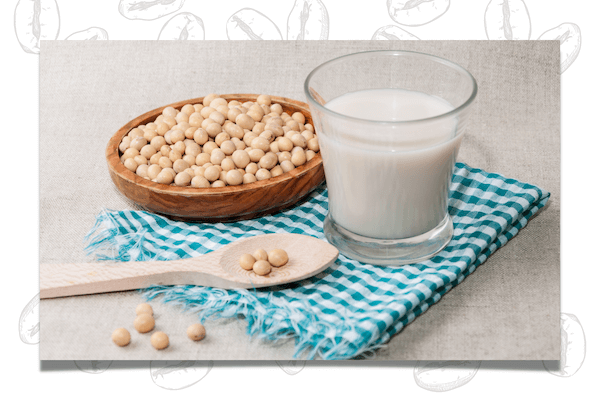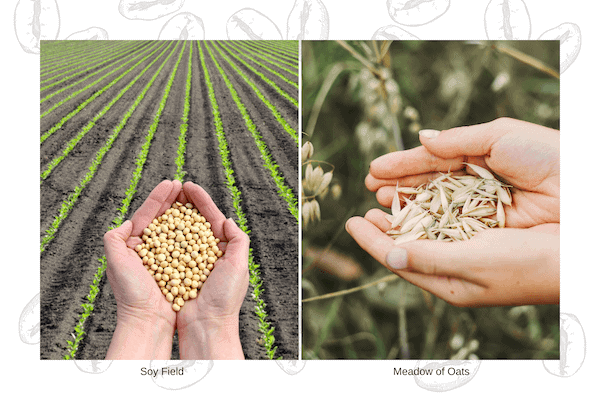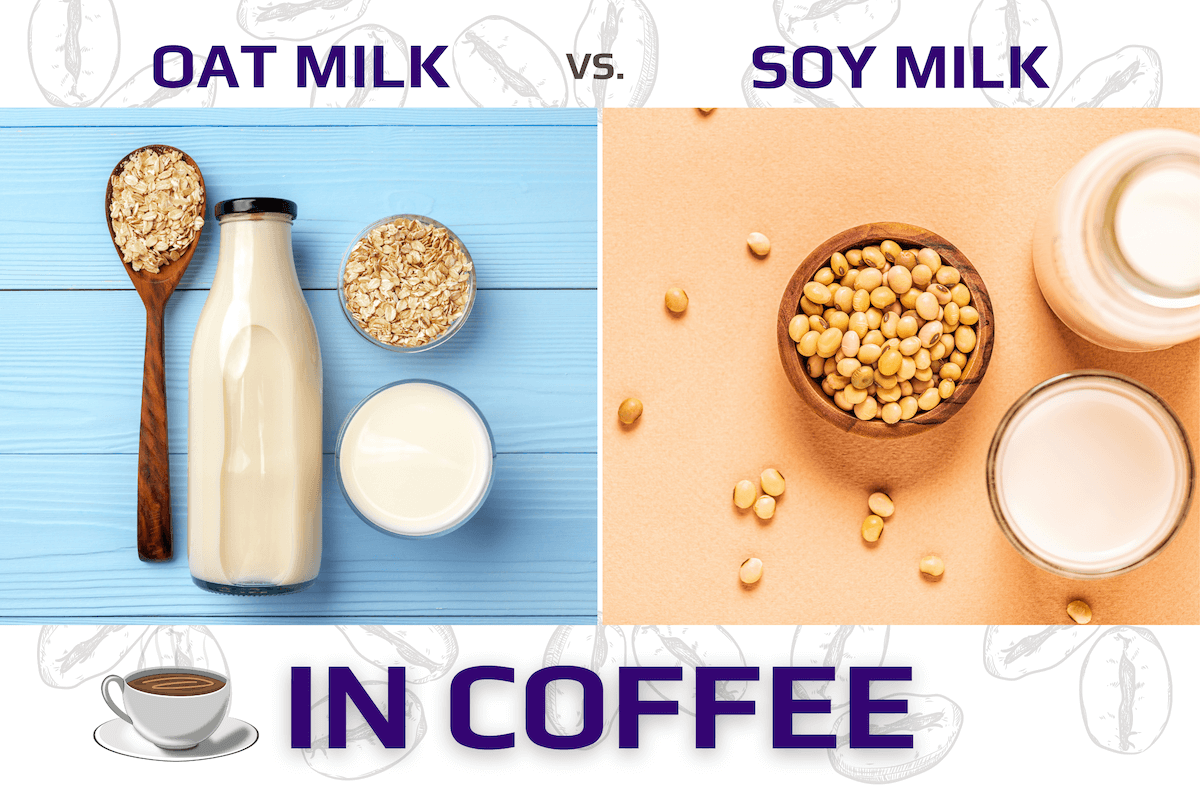As more people are looking for non-dairy alternatives for their coffee, soy milk has been around since the beginning, but oat milk has emerged as a new player. This article will compare the taste, texture, nutritional value, and environmental impact of oat milk and soy milk in coffee.
Taste in Coffee: Oat Milk vs. Soy Milk
Oat milk and soy milk are two popular plant-based milk options for coffee drinks, and each has its unique taste. Oat milk has a slightly sweet and nutty flavor that pairs well with coffee. It’s thicker than some other plant-based milks, which can give coffee a creamy and rich texture. Oat milk also has a pleasant mouthfeel and can create a frothy layer on top of a latte or cappuccino. Some coffee enthusiasts prefer oat milk for its subtle taste that doesn’t overpower the flavor of the coffee.
On the other hand, soy milk has a slightly nutty and earthy taste that can complement the bitterness of coffee. Soy milk is also a popular choice for coffee drinks because of its frothing abilities, which can create a creamy and velvety texture and great microfoam. Some people may find that soy milk has a stronger taste than oat milk, which can benefit those who want their coffee to have a noticeable milk flavor.
Ultimately, the choice between oat and soy milk in coffee drinks comes down to personal preference. Some people may prefer the slightly sweeter taste and creamier texture of oat milk, while others may prefer soy milk’s nutty and earthy taste. Both plant-based milk options are widely available and can be used in various coffee drinks, so it’s worth trying both to see which one you prefer.
Texture in Coffee: Oat Milk vs. Soy Milk
The texture of oat milk and soy milk in coffee drinks can vary depending on the brand and type of milk used. Oat milk is typically thicker than soy milk, giving coffee a creamy and velvety texture. The high-fat content in oat milk can also make it ideal for creating a frothy layer on top of a latte or cappuccino. The texture of oat milk is generally smooth and consistent, with no separation or graininess. However, some may find that oat milk has a slightly slimy texture, which can be a turn-off for some.
On the other hand, soy milk has a thinner texture than oat milk but a higher protein and fat content, which makes it very easy to froth, which is ideal for creating latte art. Some brands of soy milk may have a slightly grainy texture, which can affect the overall texture of the coffee drink. Additionally, some people may experience a slight aftertaste when using soy milk, which can be a consideration for those with sensitive palates.

Popularity: Oat Milk vs. Soy Milk
Oat milk has gained popularity in coffee drinks over the past decade in the U.S., with many coffee shops and cafes offering it as a plant-based milk option. Oat milk’s rise in popularity can be attributed to several factors, including its creamy texture, subtle flavor, and versatility. Oat milk has also become popular for those with allergies or soy milk intolerance. In addition, oat milk has a lower environmental impact than dairy milk and some other plant-based milk options, which can be a consideration for consumers who are conscious of their carbon footprint.
On the other hand, soy milk has been a popular plant-based milk option in American coffee drinks since the 1990s, when it was linked to lower levels of “bad” LDL cholesterol. Soy milk’s popularity can be traced back to the rise of vegan and vegetarian diets and the increasing awareness of lactose intolerance and dairy allergies.
However, in recent years, soy milk has faced some criticism for its potential negative impact on the environment and its association with genetically modified soybeans. Despite this, soy milk remains a popular choice for coffee drinks, and many coffee shops and cafes still offer it as a plant-based milk option alongside oat milk and other alternatives.
Overall, the popularity of oat milk and soy milk in coffee drinks has evolved, with oat milk gaining momentum in recent years and soy milk remaining a popular choice for many consumers. As the demand for plant-based milk options continues to grow, it will be interesting to see how the popularity of different milk alternatives shifts.
How Does Oat Milk vs. Soy Milk Perform When Heated and Frothed
When heated and frothed for coffee drinks like lattes, both oat and soy milk can have different characteristics. Oat milk is known for its ability to froth well, creating a creamy and velvety texture in lattes. The high-fat content in oat milk also makes it ideal for creating latte art. When heated, oat milk has a slightly sweet and nutty flavor that can complement the flavor of coffee. Oat milk is also thick enough to hold its texture when heated, which can prevent it from separating or curdling when added to hot coffee.
Soy milk is also popular for frothed and heated coffee drinks like lattes. Soy milk is known for its ability to create a thick and creamy texture when frothed, making it ideal for creating latte art. When heated, soy milk has a slightly nutty and earthy taste that can complement the bitterness of coffee.
In summary, both oat milk and soy milk can be heated and frothed for coffee drinks like lattes, but oat milk tends to be more reliable and consistent regarding texture and taste. This is likely a big contributor to oat milk’s fast rise in popularity in coffee shops.
Oat milk’s ability to froth well and hold its texture when heated makes it an ideal choice for lattes, while soy milk’s nutty flavor can complement the bitterness of coffee. Ultimately, the choice between oat and soy milk in heated and frothed coffee drinks will depend on personal preference and the desired texture and flavor.

Oat Milk vs. Soy Milk In Coffee Shops
Many coffee shops and cafes now offer oat milk and soy milk options for customers who prefer plant-based alternatives to dairy milk. Oat milk has gained popularity in the United States in recent years, with many coffee shops and cafes promoting it as a sustainable and environmentally friendly alternative to dairy milk. Additionally, oat milk’s creamy texture and subtle flavor can make it a popular choice for customers who want a plant-based milk that complements the flavor of their coffee without overpowering it.
On the other hand, soy milk has been a popular plant-based milk alternative in American coffee shops for several decades. Soy milk’s popularity can be attributed to its early adoption by the vegan and vegetarian community and its availability as a dairy-free option for customers with lactose intolerance or dairy allergies. Many coffee shops and cafes continue offering soy milk as a plant-based milk alternative alongside oat milk and other alternatives like almond milk.
Overall, the popularity of oat milk and soy milk in American coffee shops reflects consumers’ growing demand for plant-based milk alternatives. While soy milk has been a staple in American coffee shops for decades, oat milk’s rise in popularity highlights the growing interest in sustainable and environmentally friendly food choices.
Nutritional Value: Oat Milk vs. Soy Milk
In terms of nutritional value, oat milk and soy milk have different benefits. Oat milk is higher in fiber and protein than soy milk, making it a great choice for those looking for a milk alternative with added health benefits. Soy milk, on the other hand, is higher in calcium and protein, making it a good choice for those looking to increase their calcium and protein intake.
Nutrition Comparison: Oat Milk Vs. Soy Milk
| Per 1 Cup Serving | (Oatly) Oat Milk | (Silk) Soy Milk |
|---|---|---|
| Calories | 120 | 110 |
| Fat | 5g | 4.5g |
| Carbs | 16g | 9g |
| Total Sugar | 7g | 11g |
| Protein | 3g | 8g |
| Dietary Fiber | 2g | 2g |
| Calcium | 350 mg | 450mg |
| Vitamin D | 3.6 mcg | 3mcg |
Oat Milk vs. Soy Milk Ingredients
Oat milk is created by soaking and then blending oats and water, while soy milk is made by soaking and blending soybeans with water. Both oat milk and soy milk may contain additives such as sweeteners, thickeners, and preservatives, so it’s important to read the label and choose a brand with minimal additives.

Environmental Impact: Oat Milk vs. Soy Milk
When it comes to environmental impact, both oat milk and soy milk have pros and cons. Oat milk needs less water to produce than soy milk, making it a more sustainable choice. However, soybean farming can be less damaging to the environment than oat farming, as it can help to improve soil quality and reduce erosion.
Oat milk and soy milk are both considered to have lower environmental impacts than dairy milk, but their relative sustainability profiles are somewhat different. Oat milk has been touted as a more environmentally friendly plant-based alternative, partly because oats require relatively low amounts of water. Additionally, some producers of oat milk use more sustainable packaging than traditional plastic cartons. However, there are some concerns about the carbon footprint of transporting oats from Northern Europe, where most oat milk is produced, to other parts of the world and the use of pesticides.
Soy milk, on the other hand, has a more complex environmental profile. Soybeans are a relatively efficient source of plant-based protein and require less water and land than many other crops. However, soy production has been linked to deforestation in the Amazon rainforest, where many soy farms are located. Additionally, the vast majority of soybeans grown worldwide are genetically modified, which has led to concerns about the long-term impact of GMOs on the environment. Some soy milk producers also use plastic packaging, which can contribute to plastic waste.
Overall, both oat milk and soy milk have lower environmental impacts than dairy milk, but they each have unique sustainability profiles. As consumers seek more sustainable food options, it will be important to consider not only the environmental impact of different plant-based milk alternatives but also their nutritional profiles and taste characteristics.
Final Thoughts
Overall, oat milk and soy milk are both great alternatives to dairy milk in coffee. Oat milk has a creamier texture and a higher nutritional value than soy milk, making it a great choice for those looking for a milk alternative with added health benefits.
Recent Posts
If you are consuming a more plant-based diet, you've likely tried different plant-based milks. Oat and soy milk are among the most popular plant-based milks. Many people use them daily in coffee,...


